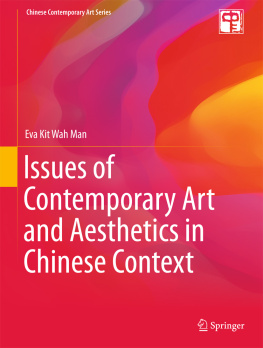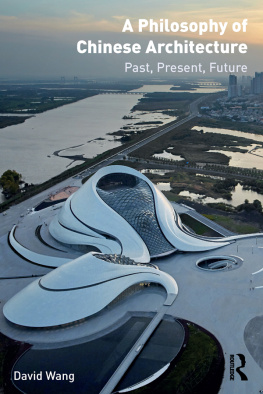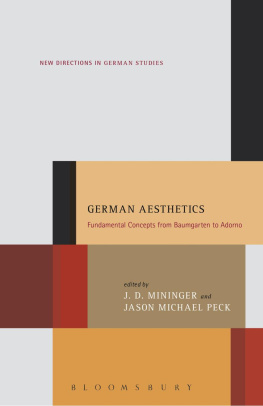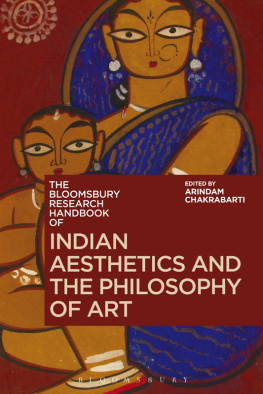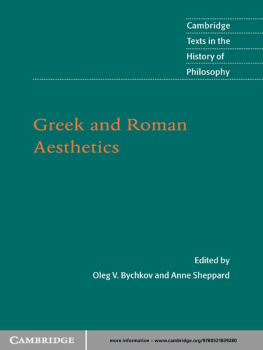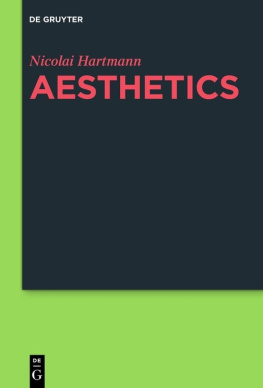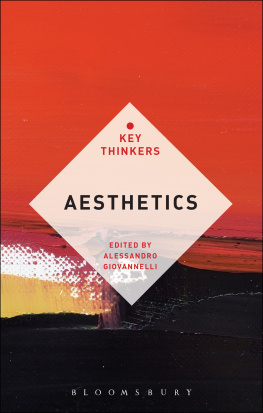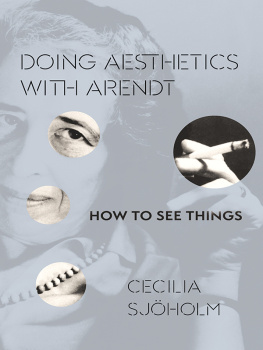1. Introduction
China, with its long-standing civilization and spectacular growth over the past few decades, has generated intense global interest in its art. Reports of Chinese artworks breaking sales records have become common, and this booming interest has sparked discussions on how Chinas transformations in the last century have shaped both its arts and its philosophical aesthetics. For instance, how have political, economic, and cultural changes shaped Chinas aesthetic developments? How have the countrys long-standing beliefs and traditions informed modern desires and forces, and how have these changes materialized in the artistic manifestations? To learn more, comparative studies between the Western aesthetic tradition and that of China are needed. This book seeks to address this significant comparative perspective, and more importantly, it aims to enrich the dialog between Chinese philosophical ideas on aesthetics and those of the West.
This book deals with some significantly understudied themes, including comparative aesthetics between the West and China, contemporary aesthetics development in China and Hong Kong, how art is intertwined with the politics of identity, art and gender issues and the challenges in traditional and creative practices. Chapters present comparative studies in art and philosophical aesthetics between China and the West. The discussions of these issues in contemporary art and aesthetics show how Chinese philosophical models can offer meaningful comparative revelations.
In Chapter , for example, two prominent authorsSren Kierkegaard from nineteenth century Denmark and Liu Xie from fifth century Chinaare examined to determine how they represent their literary traditions and how their cultures perceive the authors function. Kierkegaards theory of authorship is analyzed from a comparative perspective, using Liu Xies Chinese literary criticism from Wenxin Diaolong as a comparative model. The authors views on literary function, the spiritual and aesthetic dimensions and creative force of compositional literary writing and the goal of writing are examined, as elaborated by these two authors. According to Kierkegaard, the quality of an authors writing is mainly tied up in his or her religious mind, whereas Liu relates it to moral quality. The analysis demonstrates how Kierkegaard and Liu complement and enrich each other in their understanding of authorship and writing, despite inhabiting distant centuries.
Chapters begins with the main dimensions of aesthetic experience in the history of Western aesthetics, as concluded by Shusterman. In the fragmentation of modern life and the disjointed sensationalism of the media, Shusterman notes that people are losing the capacity for deep experience and feeling especially as we undergo various extensive informational revolutions. This chapter is also a response to Shustermans claim that the concept of aesthetic experience is worth recalling, not for formal definition but for arts reorientation toward values and populations that could restore its vitality and sense of purpose. It mentions the recent call for values and life concerns in art within the Anglo-American aesthetics circle which has also turned to the possible strength of aesthetic experience, claiming that aesthetics is the mother of ethics. Amid the discourse is a review of John Deweys notion of aesthetic experience which claims to support a transcultural view and common patterns, as the relationship is structured around human needs. The chapter addresses whether the Deweyan notion, which still represents some of the most influential Western aesthetics, can provide a satisfying answer to the problem of art and value. The discussion then turns to aesthetics models suggested by neo-Confucians for reference, and points out some meaningful comparative discoveries.
Chapter first reviews the recent debates on aesthetics and the formation of related schools of thought in the new China. It also introduces the late developments in Chinese aesthetics as discussed by younger aestheticians who have suggested a return to traditional values. The chapter presents a historical account and philosophical analysis of the development of philosophical aesthetics in China during its Marxist regime, and focuses on the relation between the subject and the object in aesthetic experience. It introduces the four major schools of thought on aesthetics in the new China and names their leaders: Gao Ertai, Cai Yi, Zhu Guangqin and Li Zehou. Each leader has suggested a different relationship between the subject and the object in aesthetic experience and initiated debates and controversies among themselves. In the 1990s, a group of young Chinese aestheticians suggested a modern aesthetics system in which the traditional aesthetic notion of ganxing was reconstructed. During the same period, Li Zehous shijian meixue (aesthetics in praxis) was far more widely discussed and critically reflected in the country. This chapter analyzes the nature and the structure of the notion of ganxing, and demonstrates its struggle for a balanced integration of traditional Chinese and Marxist aesthetics. The chapter continues to take a deeper look at the traditional notion of aesthetic ganxing that demonstrates the concepts connection to Chinas political developments and how the notions of subjectivity and autonomy are emphasized in contemporary Chinese aesthetics.
The concept of ganxing is both old and new, stemming from traditional Chinese aesthetics related to aesthetic experience in literary discourses but presently being used to replace the old notion of aesthetic experience. It is now the central concept of an aesthetic system promoted by a group of young aestheticians in China in the 1990s. This chapter briefly discusses whether the concept is new, and looks at the direction in which it is developing. This discussion ties the new developments in China to the theme of subjective autonomy and the social contexts in contemporary Chinese aesthetics. It is recently proposed that aesthetic system is part of a long-term research effort to construct a new form of aesthetics in China that manifests four construction principles: acting as a dialog for traditional and contemporary aesthetics, merging Oriental and Western aesthetics, integrating aesthetics with related studies, and enhancing the advancement of both theoretical and applied aesthetics. Given these principles of construction, it is important to note that the overall tone is still Marxist, both in its basic structure and intention. An examination of the core notion of the system enables us to better understand the discussion of contemporary aesthetics in China.
Chapter focuses on the notion of beauty, exploring the ideals of feminist aesthetics as a form of critical politics. In appreciating feminist aesthetics attempts to reconstruct the Western modern aesthetics model, the chapter points out the differences between the latters agenda and the non-Western suggestionin this case traditional Chinese aestheticsas a potential alternative feminist paradigm. Worth noting is the comparative revelation and conditions feminist aesthetics are facing in drawing the non-Western reference. It starts with the reflection and analysis of the origin of beauty in Confucian aesthetics by tracing its origin to the suggestion of the Confucian moral mind. The emergence process for such an aesthetic experience is very different from that of the Western mainstream, in which the subject and object dichotomy is presupposed. The transcendental mind of the process is the origin of the truth, the goodness, and the beauty, which are not alien to most Eastern philosophical models, and the subject corresponds with Heaven. The chapter explores the ideals of feminist aesthetics as a form of critical politics, noting significant considerations while still appreciating feminist aesthetics attempts to reconstruct the Western aesthetics model.

